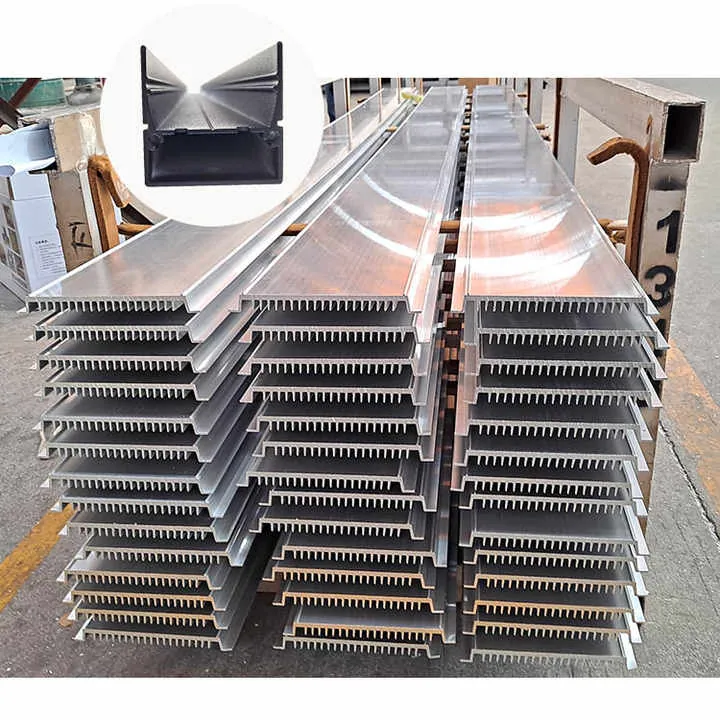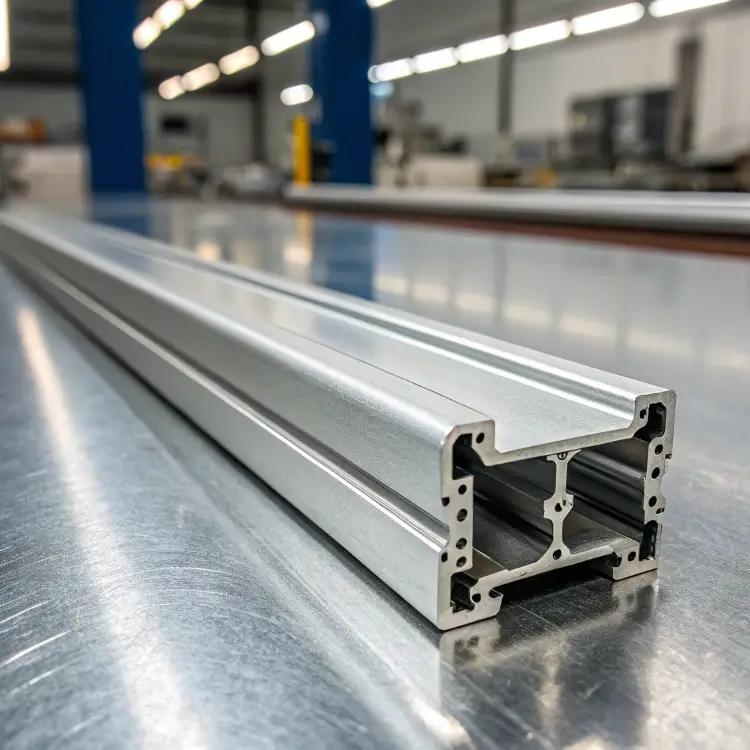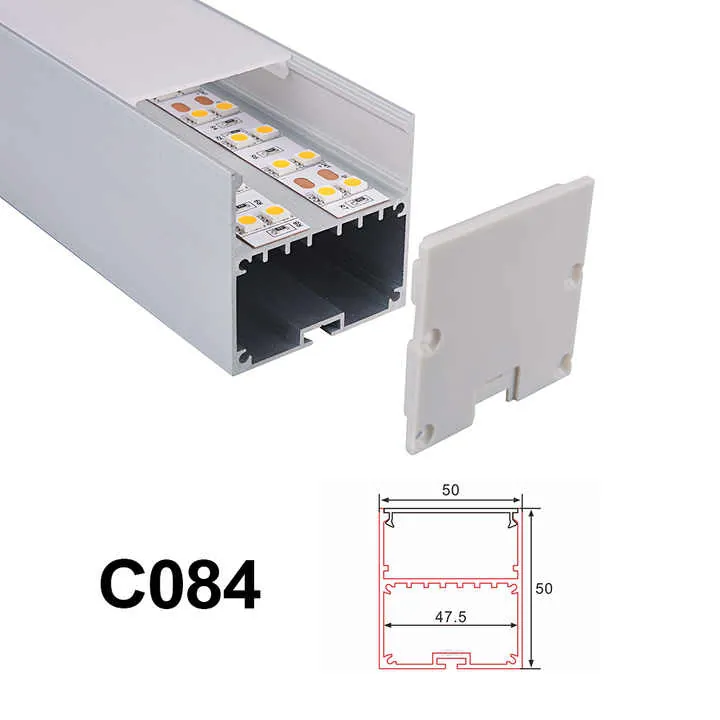Is Aluminum Magnetic?

Many people are surprised when a magnet doesn’t stick to aluminum. They might even think something is wrong with the magnet-or the metal. But there’s a reason for this behavior.
Aluminum is not magnetic in the way most people understand magnetism. It does not attract magnets because it’s not ferromagnetic, but instead it is weakly paramagnetic.
Most people never think about the different types of magnetism. But understanding why aluminum acts the way it does starts by understanding what “magnetic” really means.
Why Don’t Magnets Stick to Aluminum?
Most people think all metals are magnetic. They grab a fridge magnet, try it on aluminum, and nothing happens. This causes confusion.
Magnets don’t stick to aluminum because it is not ferromagnetic. Ferromagnetism is the property that makes magnets stick to materials like iron.

Aluminum is made of atoms whose electrons are arranged in such a way that they don’t support strong magnetic alignment. This is different from ferromagnetic metals, where many electrons align in the same direction, creating a strong magnetic field. That’s why a magnet easily sticks to iron but not to aluminum.
Even though aluminum is a metal, it doesn’t have the right atomic structure to support ferromagnetism. It falls under a category called “paramagnetic.” This means it responds weakly to magnetic fields, but not enough for magnets to stick to it.
Comparing Types of Magnetism
Let’s compare three basic types of magnetism to understand where aluminum fits:
| Type of Magnetism | Example Materials | Magnetic Behavior |
|---|---|---|
| Ferromagnetic | Iron, Nickel, Cobalt | Strong attraction, magnets stick |
| Paramagnetic | Aluminum, Magnesium | Weak attraction, only in strong fields |
| Diamagnetic | Copper, Bismuth, Silver | Weak repulsion |
Aluminum is paramagnetic. This means that in the presence of a strong magnetic field, its electrons will try to align, but only slightly and temporarily.
Even then, the effect is so weak that you won’t feel any pull or see any movement from a magnet. That’s why magnets slide off aluminum as if nothing is there.
Aluminum is a ferromagnetic material.False
Aluminum is paramagnetic, not ferromagnetic. It does not support strong magnetic alignment.
Magnets do not stick to aluminum because it is not ferromagnetic.True
Aluminum does not have the electron structure needed for ferromagnetism, so magnets do not stick to it.
Can Aluminum Become Magnetic Under Any Conditions?
People sometimes wonder if aluminum could be made magnetic somehow-maybe through treatment, electricity, or extreme environments.
Aluminum cannot become permanently magnetic under normal or extreme conditions. It can show weak magnetic alignment in strong fields, but the effect disappears instantly when the field is removed.

In a laboratory setting, I have seen that aluminum can show signs of magnetization when exposed to high magnetic fields. But this is very different from becoming magnetic like a fridge magnet or permanent magnet.
It’s a temporary effect. Once the field is gone, the material returns to its non-magnetic state.
This kind of temporary response is what we call “induced paramagnetism.” In other words, the aluminum only shows magnetic behavior while inside the magnetic field. It cannot retain this behavior.
When Aluminum Seems Magnetic
There are cases where people think aluminum is becoming magnetic:
- Electromagnetic induction: When aluminum moves in a magnetic field (or vice versa), it may produce currents called eddy currents. These can create magnetic effects.
- Low temperatures: Paramagnetism becomes slightly stronger at lower temperatures, but not enough to make aluminum truly magnetic.
- Strong magnetic fields: The effect is measurable in lab equipment, but not by hand.
Still, none of these scenarios make aluminum magnetic in the way people usually mean. The moment those conditions stop, aluminum loses the magnetic behavior.
| Condition | Behavior in Aluminum |
|---|---|
| Normal environment | No magnetism |
| Strong magnetic field applied | Weak, temporary alignment |
| After field is removed | Returns to non-magnetic state |
| Near superconducting magnets | Small induced magnetic behavior |
Aluminum becomes permanently magnetic in a strong magnetic field.False
Aluminum only shows weak, temporary magnetization in a magnetic field. It does not become permanently magnetic.
Aluminum shows weak magnetism only while a strong field is applied.True
Aluminum’s electrons align weakly during exposure to strong magnetic fields, but revert immediately once the field is removed.
How Does Aluminum Respond to Strong Magnetic Fields?
Some people might think that aluminum has no response at all to magnets, but that’s not true.
Aluminum shows weak paramagnetic behavior in strong magnetic fields. It temporarily aligns some of its electrons, but the effect is not permanent.

If I place a piece of aluminum inside a strong magnetic field, such as the type generated by an MRI machine or industrial electromagnet, some of its electrons will shift their orientation slightly. This effect is called alignment with the magnetic field.
But this response is weak, and it disappears immediately when the magnet is removed. Unlike iron or nickel, aluminum does not stay magnetized or become magnetic on its own.
Key Characteristics
Let’s break down how aluminum behaves:
- Linear Response: The magnetic effect increases directly with the strength of the magnetic field.
- No Retained Magnetism: Once the external field goes away, aluminum returns to normal.
- Not Detectable by Hand: You need sensitive instruments to detect the changes.
- No Magnetic Domains: Aluminum does not have the regions of aligned atoms seen in magnetic metals.
Magnetic Behavior Comparison
| Material | Magnetic Domains? | Permanent Magnetism? | Response to Strong Fields |
|---|---|---|---|
| Iron | Yes | Yes | Strong |
| Copper | No | No | Slight repulsion |
| Aluminum | No | No | Weak attraction |
This is why aluminum is often used in electronic and scientific environments-it won’t interfere with magnetic systems. But in fields where precision is critical, even small magnetic behaviors must be considered.
Aluminum retains magnetic alignment after exposure to a strong magnet.False
Aluminum does not retain any magnetism once the external field is removed.
Aluminum’s magnetic response increases with stronger magnetic fields.True
Aluminum shows more noticeable magnetic alignment in stronger fields, though it remains weak and temporary.
What Practical Effects Does Aluminum’s Paramagnetism Have?
It’s one thing to know aluminum is paramagnetic-but does this weak magnetism matter in the real world?
Aluminum’s paramagnetism has little effect in most daily applications, but it becomes important in scientific instruments and high-precision magnetic environments.

Most people won’t notice aluminum’s magnetism at all. In construction, packaging, cookware, and transport, aluminum behaves like a non-magnetic material. That’s why it’s used in so many industries.
But in high-precision fields-like MRI machines, magnetic levitation systems, or particle physics labs-the paramagnetism of aluminum needs to be considered. It can slightly alter magnetic fields or react in small ways when placed in sensitive instruments.
Where It Matters
| Application | Magnetic Concern Level | Reason Aluminum Is Used |
|---|---|---|
| Construction frames | Low | Lightweight, non-magnetic |
| Aerospace components | Low | Strength-to-weight ratio |
| MRI housing or brackets | Medium | Predictable magnetic response |
| Particle accelerators | High | Minimal interference needed |
Even though the effect is minor, the predictability of aluminum’s response makes it useful. Engineers can calculate exactly how aluminum will behave, which is critical in labs.
Aluminum's weak magnetism affects most consumer electronics.False
In most consumer electronics, aluminum's magnetism is too weak to have any impact.
Aluminum’s paramagnetism is important in scientific instruments.True
Aluminum’s weak and predictable magnetism makes it a reliable material in precision instruments.
Conclusion
Aluminum is not magnetic in the everyday sense. It does not attract magnets or become magnetized. Instead, it is weakly paramagnetic-it responds slightly to strong magnetic fields but only while the field is present. This makes it useful in both everyday and advanced technical environments.



